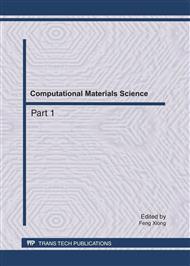p.946
p.950
p.955
p.960
p.966
p.969
p.975
p.981
p.988
Composite Morphological Approach for Skeleton Extraction
Abstract:
Image processing toolbox of Matlab provides a morphological skeletonization operator. But this function is sensitive to noises. The aliasing shape's skeleton computed by this operator involves many extra branches. In order to eliminate the influence of aliasing noises, a combined method is introduced. The method combines the morphological thinning and skeletonization operators, and takes their advantages. It is not sensitive to noises, and can eliminate the extra branches.
Info:
Periodical:
Pages:
966-968
Citation:
Online since:
July 2011
Authors:
Keywords:
Price:
Сopyright:
© 2011 Trans Tech Publications Ltd. All Rights Reserved
Share:
Citation:


